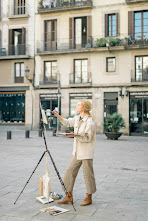Chart Data is sourced from Hill Strategies: Statistical Insights on the Arts in Canada (Kelly Hill)
Subscribe to their newsletter here
The Canadian arts and culture sector plays a significant role in the economy. Below are some key statistics regarding its contributions to the Gross National Product (GNP): Its hard to know what is going on in our local arts community let alone the rest of Canada. Very rarely does the economic impact of the arts in real dollars reach the general public. It is doubtful that these numbers are discussed in economic class and the information seems to be buried in the Statistics Canada data base. This newlsetter has some excellent insight and analysis on what artists might want to know about their worth as a professional artist.
Canadian art contributes significantly to the economy, with the arts and culture sector representing about 3% of Canada’s GDP. In 2019, the total economic impact of the arts was estimated at approximately $53 billion. Additionally, the sector supports around 700,000 jobs nationwide. These contributions highlight the importance of the arts in driving economic growth and fostering community development.
Here is a broad view minimum measurement sample of our visual Arts Economy:
$14 billion in revenues were contributed by visual arts in Canada 2023 (Visual Arts account for 41% of the total arts & culture contribution)
In 2023--4% was the `Original' Visual Arts portion of the pie, worth $ .5 billion dollars to the Canadian economy.(One billion is a thousand millions.One billion is a 1 with nine zeros after it, denoted by 1,000,000,000). $500 million dollars is generated for the economy by original visual art sales in Canada.
Screen shot from Hill Strategies Newsletter Oct 15, 2024.
Economic Contribution: The arts and culture sector contributed approximately CAD 53 billion to the Canadian economy in recent years.
Employment: The sector employs around 700,000 individuals across various fields, including visual arts, performing arts, and cultural industries.
Growth Rate: The cultural sector has seen growth rates that often outpace other industries, highlighting its increasing significance in the economy.
Investment: Government investment in the arts is substantial, with federal and provincial funding supporting various programs, organizations, and initiatives.
Tourism Impact: Cultural tourism, which includes visits to museums, galleries, and cultural events, generates significant revenue, contributing to both local economies and overall GNP.

















